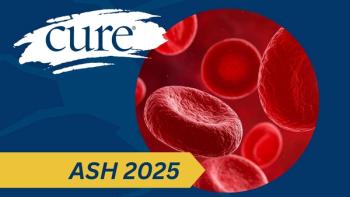
Understanding Your Diagnosis: Stage 2 Oral Cavity Cancer
Key Takeaways
- Stage 2 oral cavity cancer involves tumors larger than 2 cm but not exceeding 4 cm, without lymph node or distant spread.
- Diagnosis includes physical exams, biopsies, imaging tests, and endoscopy to assess tumor extent and guide treatment.
Understand your stage 2 oral cavity cancer diagnosis, explore primary treatment options and get key questions for your oncologist.
A diagnosis of cancer can be overwhelming, and it is important for you to have clear, reliable information as you begin your journey. This guide, presented in an informative and educational tone, is designed to help you understand your diagnosis of stage 2 oral cavity cancer and prepare for conversations with your oncologist and medical team.
What Is Stage 2 Oral Cavity Cancer? Defining the Tumor Size and Spread
Oral cavity cancer is
Staging for oral cancer is based on the TNM system, which describes the tumor size and depth, spread to nearby lymph nodes, and whether the cancer has metastasized, or spread, to distant parts of the body.
A stage 2 diagnosis means the tumor is larger than a stage 1 tumor but has not spread to the lymph nodes or distant sites. Specifically, a stage 2 tumor is larger than 2 centimeters, but not larger than 4 centimeters, and the deepest point of tumor invasion is 10 millimeters or less. Because the cancer is still localized, this stage is often highly treatable.
How Do Doctors Diagnose Stage 2 Oral Cavity Cancer?
The diagnostic process is essential for determining the exact extent of the disease and guiding your treatment plan.
- Physical exam: Your doctor will perform a thorough exam of your mouth, neck and throat, checking for any sores, lumps or changes in tissue.
- Biopsy: This is the definitive test. A small sample of suspicious tissue is removed and examined under a microscope to confirm the presence of cancer cells and determine the type of cancer.
- Imaging tests: These tests help your care team determine the size of the tumor and confirm that the cancer has not spread. Imaging may include computed tomography (CT) scan, magnetic resonance imaging (MRI), and positron emission tomography (PET) scan (often combined with a CT scan).
- Endoscopy/Laryngoscopy: A thin, flexible tube with a camera may be used to look at your throat and other areas of the upper aerodigestive tract to check for any signs of spread beyond the mouth.
What is the Best Treatment for Stage 2 Oral Cavity Cancer?
The primary treatment for stage 2 oral cavity cancer is typically a single method, though a combination approach may be recommended based on the tumor's location and characteristics. The two main treatment options are surgery and radiation therapy.
“For a tumor that started in the oral cavity, in the tongue, the primary treatment tends to be surgery first, provided it's not going to be disfiguring or cause significant dysfunction, so that they can still maintain their speech and swallowing,” Dr. Lillian L. Siu — a senior medical oncologist and clinical lead for the Tumor Immunotherapy Program at the Princess Margaret Cancer Centre in Toronto, Ontario, said in an
Surgery: Surgery is a common and highly effective treatment for stage 2 oral cavity cancer. The goal is to remove all of the cancer while preserving as much normal tissue and function as possible.
- Wide local excision: This is the removal of the tumor along with a small margin, or edge, of healthy tissue around it to ensure all cancer cells are taken out.
- Neck dissection: Since stage 2 cancer has not spread to the lymph nodes, this procedure to remove lymph nodes in the neck may not be necessary. However, it may be considered if there are features of the tumor that suggest a higher risk of microscopic spread.
- Reconstructive surgery: If the tumor is large, plastic or reconstructive surgery may be needed to repair the mouth or face to help restore appearance and function, such as speaking, swallowing and chewing.
Radiation therapy: Radiation therapy uses high-energy rays, such as X-rays, to destroy cancer cells. This may be used as the primary treatment instead of surgery, or it may be used after surgery, known as adjuvant therapy, if the medical team believes there is a risk of cancer remaining.
- External beam radiation therapy (EBRT): A machine outside the body aims radiation beams at the cancer.
- Brachytherapy (internal radiation): Less common, this approach involves placing radioactive sources directly into or next to the tumor.
What Are the Side Effects of Stage 2 Oral Cancer Treatment?
Treatment side effects vary based on the specific type of treatment, the dose and the patient's overall health. Your medical team will discuss management strategies for each of these effects.
Common Adverse Effects
Surgery
Pain, temporary swelling, difficulty speaking or swallowing, infection, changes to appearance, and numbness around the surgical site.
Radiation Therapy
Short-term: Mouth and throat soreness (mucositis), dry mouth (xerostomia), change in taste, skin irritation, and fatigue. Long-term: Dry mouth, tooth decay (radiation caries), stiffness in the jaw (trismus), and rarely, damage to the jawbone (osteoradionecrosis).
“Radiation can sometimes leave patients with dry mouth, sometimes fibrosis or scarring, and sometimes late toxicity of the radiation, such as osteonecrosis of the jaw, where the bone in the jaw can get into trouble in terms of necrosis or death, becoming very necrotic and requiring surgery for dental health,” Siu said in the interview.
What Should I Ask My Oncologist After a Stage 2 Oral Cancer Diagnosis?
Receiving a cancer diagnosis is a life-changing event, but stage 2 oral cavity cancer is often highly curable. The most critical next step is the ongoing conversation with your cancer specialist.
Questions for Your Oncologist:
- What is the exact size and location of my tumor, and what treatment approach do you recommend?
- What are the specific risks and long-term side effects of the treatment you are recommending?
- Will I need reconstructive surgery, and what will my recovery and rehabilitation plan involve?
- How often will I need follow-up appointments and scans after treatment is complete?
References
- CURE. Understanding Head and Neck Cancer: A Guide for Newly Diagnosed Patients. CURE, Sept. 12, 2025.
- CURE. Breaking Down Treatment Options for Patients With Head and Neck Cancer. CURE, April 9, 2025.
Editors note: Your personal experience will be unique. By using this information as a foundation for your discussions, you can partner with your oncologist to make the best decisions for your health.
This article is for informational purposes only and is not a substitute for professional medical advice. Please contact your healthcare team with any questions or concerns.
For more news on cancer updates, research and education,




